Introduction To Cauliflower: Definition And Nutritional Facts
Cauliflower is a cruciferous vegetable that belongs to the same family as broccoli, kale, and cabbage. It is an excellent source of nutrients, including vitamins C and K, folate, and fiber, making it a great addition to a healthy diet.
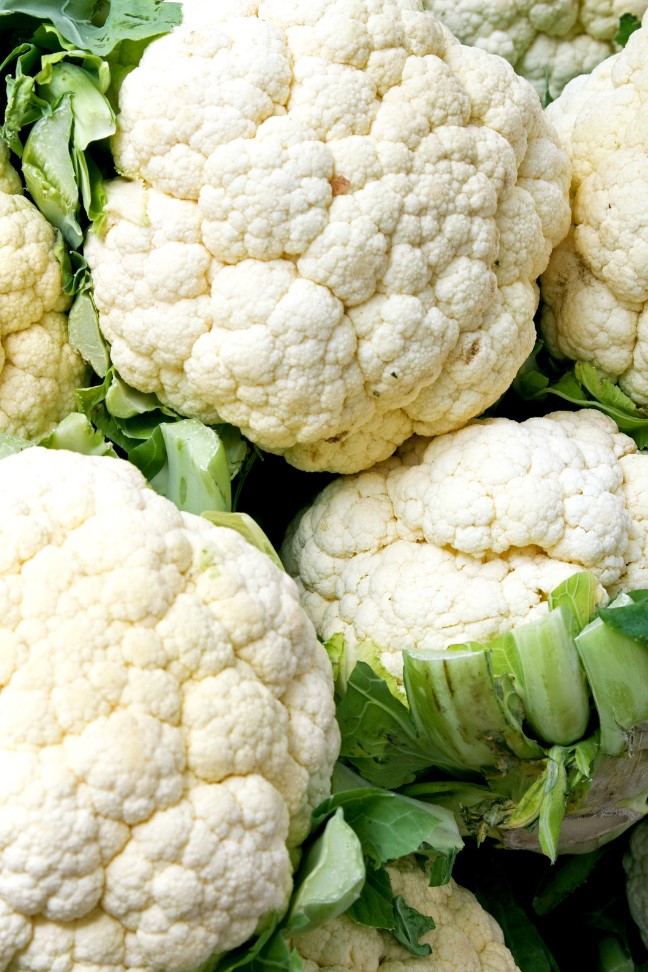
One of the defining characteristics of cauliflower is its white, flowery head, although it can also come in green, purple, and orange varieties. Despite its pale appearance, cauliflower packs in a dense nutritional punch, providing a remarkable amount of minerals and essential vitamins.
- One cup of raw cauliflower contains:
- – 27 calories
- – 0 grams of fat
- – 5 grams of carbs, including 2 grams of fiber and 2 grams of sugar
- – 2 grams of protein
Moreover, cauliflower is an excellent source of vitamin C, providing up to 77% of the daily recommended value in just one cup. This vitamin plays a critical role in immune function, and it also acts as an antioxidant, helping to protect the body against cell damage.
Additionally, cauliflower contains glucosinolates, which are sulfur-containing compounds that may help to lower the risk of several types of cancer, such as lung, colon, and breast cancer. These compounds also contribute to the vegetable’s slightly bitter taste and pungent aroma.
| Nutrient | Amount |
|---|---|
| Calories | 27 |
| Carbohydrates | 5 g |
| Fiber | 2 g |
| Sugar | 2 g |
| Protein | 2 g |
| Vitamin C | 77% of the Daily Value (DV) |
| Vitamin K | 20% of the DV |
| Folate | 14% of the DV |
Overall, cauliflower is not only tasty, but it also provides vital nutrients that can help to support your overall health and well-being.
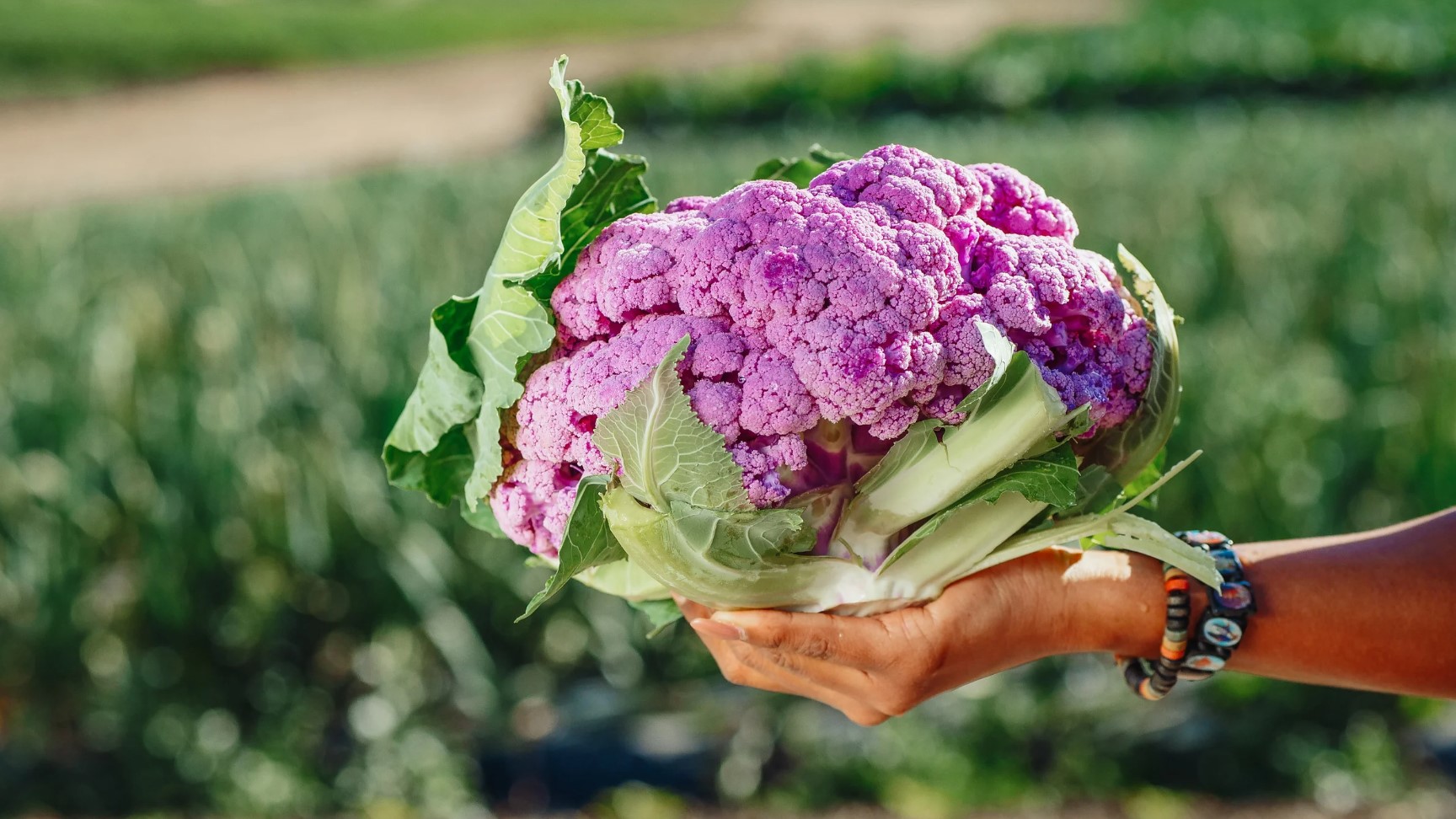
Health Benefits Of Cauliflower: A Comprehensive Guide
When it comes to healthy eating, cauliflower is definitely one of the superstars. This cruciferous vegetable is loaded with vitamins, minerals, and antioxidants, making it a valuable addition to any diet. In this post, we will explore the health benefits of cauliflower, ranging from digestion to cancer prevention.
1. Digestive Health: Cauliflower is an excellent source of fiber, which can promote regularity and help prevent constipation. The fiber in cauliflower can also feed the beneficial bacteria in our gut, which can improve overall digestive health.
2. Cancer Prevention: Cauliflower is rich in antioxidants such as vitamin C and beta-carotene that protect our cells from damage caused by free radicals. This helps to reduce the risk of certain types of cancer, such as lung, colon, and breast cancer.
- Vitamin C found in cauliflower also plays an important role in collagen production, which is crucial for skin health.
- Cauliflower is also a rich source of choline, which is important for brain health and development.
- It is low in calories and high in water content, making it a great vegetable for weight loss and hydration.
3. Anti-Inflammatory Properties: Cauliflower contains compounds like sulforaphane and glucobrassicin, which have anti-inflammatory properties. This means that consuming cauliflower can help reduce inflammation in the body, which is linked to a variety of chronic diseases like arthritis, heart disease, and diabetes.
| Nutrient | Amount per 1 cup (100g) |
|---|---|
| Calories | 25 |
| Protein | 2 grams |
| Fiber | 3 grams |
| Vitamin C | 77% of the RDI* |
| Vitamin K | 20% of the RDI* |
| Folate | 14% of the RDI* |
| Potassium | 9% of the RDI* |
Conclusion: In conclusion, cauliflower is a nutritious and versatile vegetable that can offer a wide range of benefits to our health. With its anti-inflammatory, anti-cancer, and digestive-friendly properties, it’s a great food to include in our diet.
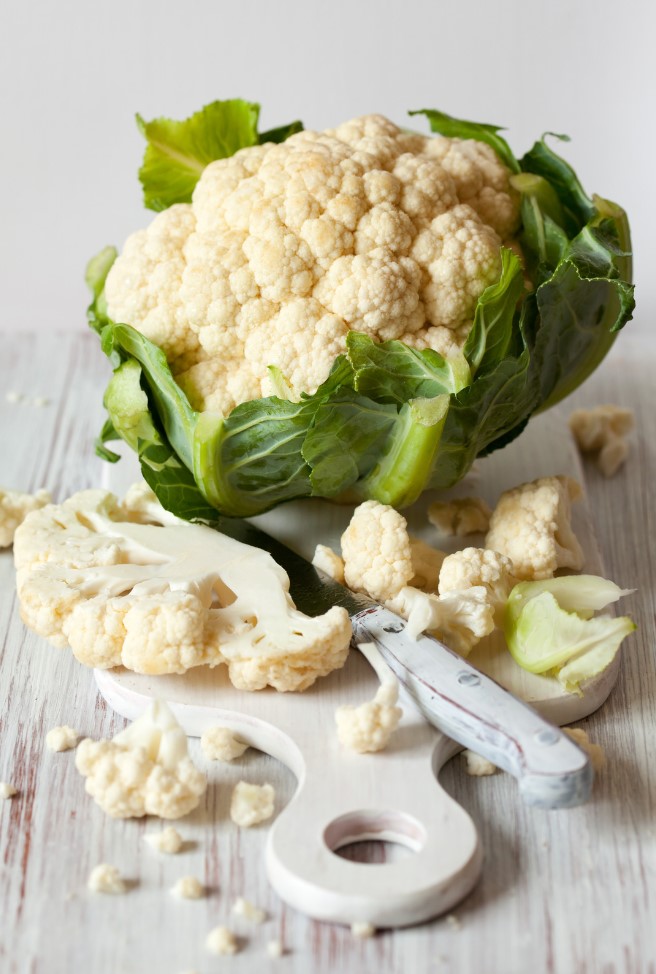
How To Select And Store Cauliflower For Maximum Freshness
Cauliflower is a cruciferous vegetable that is considered a powerhouse of nutrients. This vegetable is packed with vitamins, minerals, fiber, and antioxidants that provide various health benefits. However, to make the most of your cauliflower, it is important to select and store it properly to maintain maximum freshness. Here are some tips to help you with that.
- Selecting Fresh Cauliflower: When buying cauliflower, choose carefully by looking at its color and texture. Fresh cauliflower should be firm, compact, and dense. The color should be pure and uniform without any browning or yellowing spots. Avoid cauliflower that has a soft or mushy feel, as it may be rotten or spoiled.
- Storing Cauliflower: Proper storage of cauliflower is important to maintain its freshness and extend its shelf life. If you plan to use it within a few days, store the cauliflower in the refrigerator’s crisper drawer. Make sure to wrap it in a plastic bag or a damp cloth to prevent moisture loss. However, if you want to store it for a longer period, you can blanch it for a minute, then freeze it in an airtight container.
- Avoiding Excessive Moisture: Too much moisture can cause cauliflower to spoil quickly. Therefore, avoid washing it before storing it in the refrigerator. If you must wash it, make sure to drain the water thoroughly before storing it. Also, avoid plastic containers or bags as they trap moisture, which can cause the cauliflower to rot or turn brown. Instead, use paper towels or a cotton cloth to absorb the excess moisture.
By following these simple tips, you can select and store fresh cauliflower for longer periods without losing its flavor and nutritional value. So, take the time to choose carefully and store properly, and enjoy the many health benefits that this superfood has to offer!
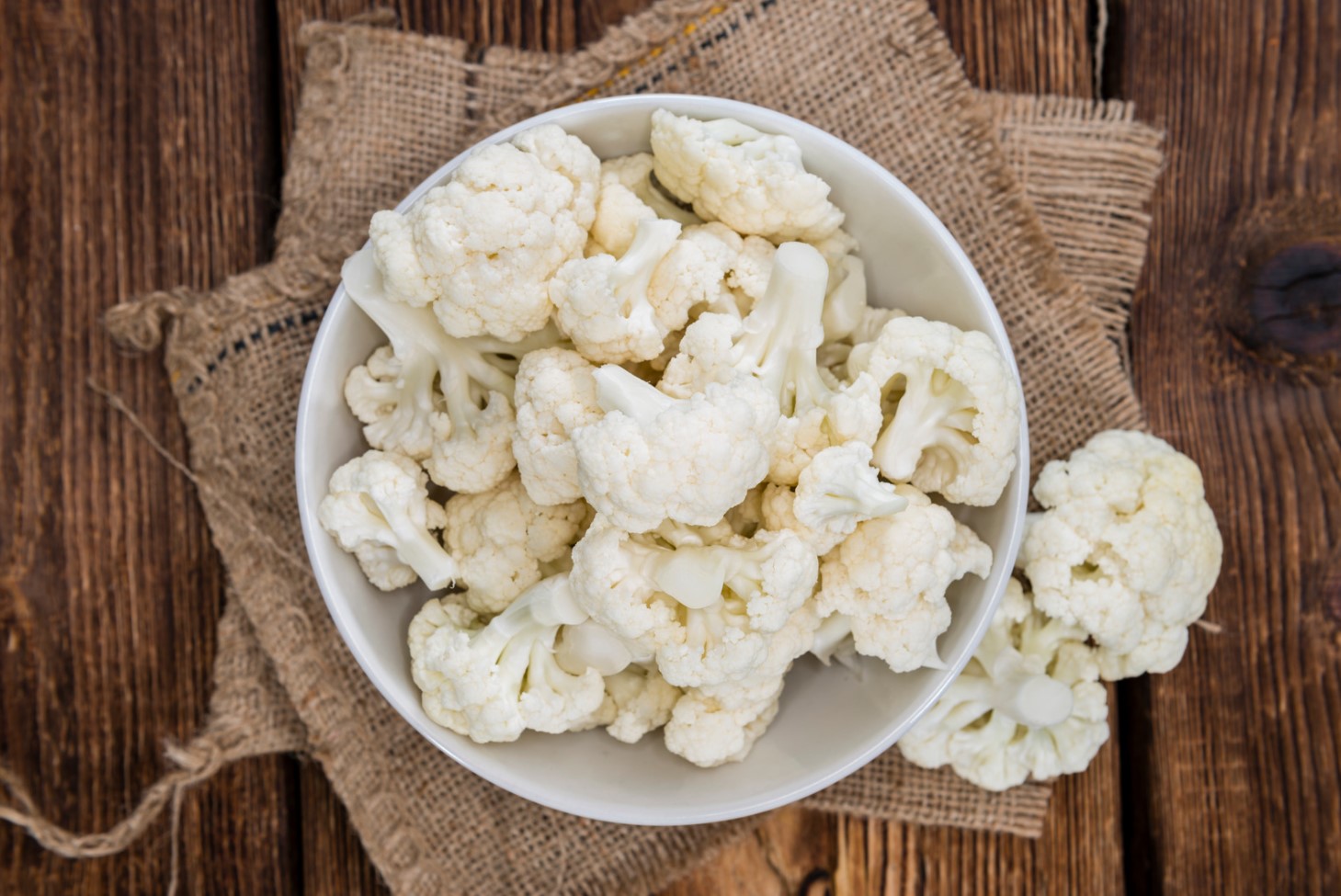
How To Cook Cauliflower: Tips And Tricks For Delicious Results
Cauliflower is a versatile vegetable that can be enjoyed in many delicious ways. Whether you boil, roast, steam, or even grill it, you’ll be sure to end up with a flavorful dish. If you’ve never cooked cauliflower before, don’t worry! With a few tips and tricks, you can cook it perfectly every time.
Tip #1: Clean the cauliflower properly
Before you start cooking, make sure to clean the cauliflower properly. Remove the leaves and trim the stem. Cut the cauliflower into florets, and rinse thoroughly in cold water.
Tip #2: Use different cooking methods
Don’t limit yourself to just one cooking method. Cauliflower can be boiled, roasted, steamed, or even grilled. Each cooking method offers its own unique flavor and texture, so don’t be afraid to experiment.
- Boiling: Boil the cauliflower florets in water for about 5-7 minutes until they’re tender. Drain well before serving.
- Roasting: Preheat the oven to 400°F. Toss cauliflower florets in olive oil, salt, and pepper. Roast for 25-30 minutes until they’re golden brown and crispy.
- Steaming: Place the cauliflower in a steamer basket over boiling water. Steam for about 6-8 minutes until they’re tender.
- Grilling: Preheat the grill to medium heat. Toss cauliflower florets in olive oil, salt, and pepper. Grill for about 8-10 minutes until they’re charred and tender.
Tip #3: Add flavor with seasonings and sauces
Cauliflower has a mild flavor on its own, but you can enhance it with different seasonings and sauces.
| Sauce/Seasoning | Flavor Profile |
|---|---|
| Garlic and Parmesan | Savory, cheesy |
| Curry Powder | Spicy, fragrant |
| Lemon and Dill | Refreshing and tangy |
| Soy Sauce and Honey | Sweet and salty |
Tip #4: Try cauliflower as a substitute
Not only is cauliflower delicious on its own, but it can also be used as a substitute in many dishes. Replace rice with cauliflower rice, use it as a pizza crust, or mash it as a substitute for potatoes. Cauliflower is versatile and can be used in many dishes!
Next time you cook cauliflower, try out these tips and tricks for a delicious result. There’s no limit to the ways you can enjoy this nutritious vegetable!
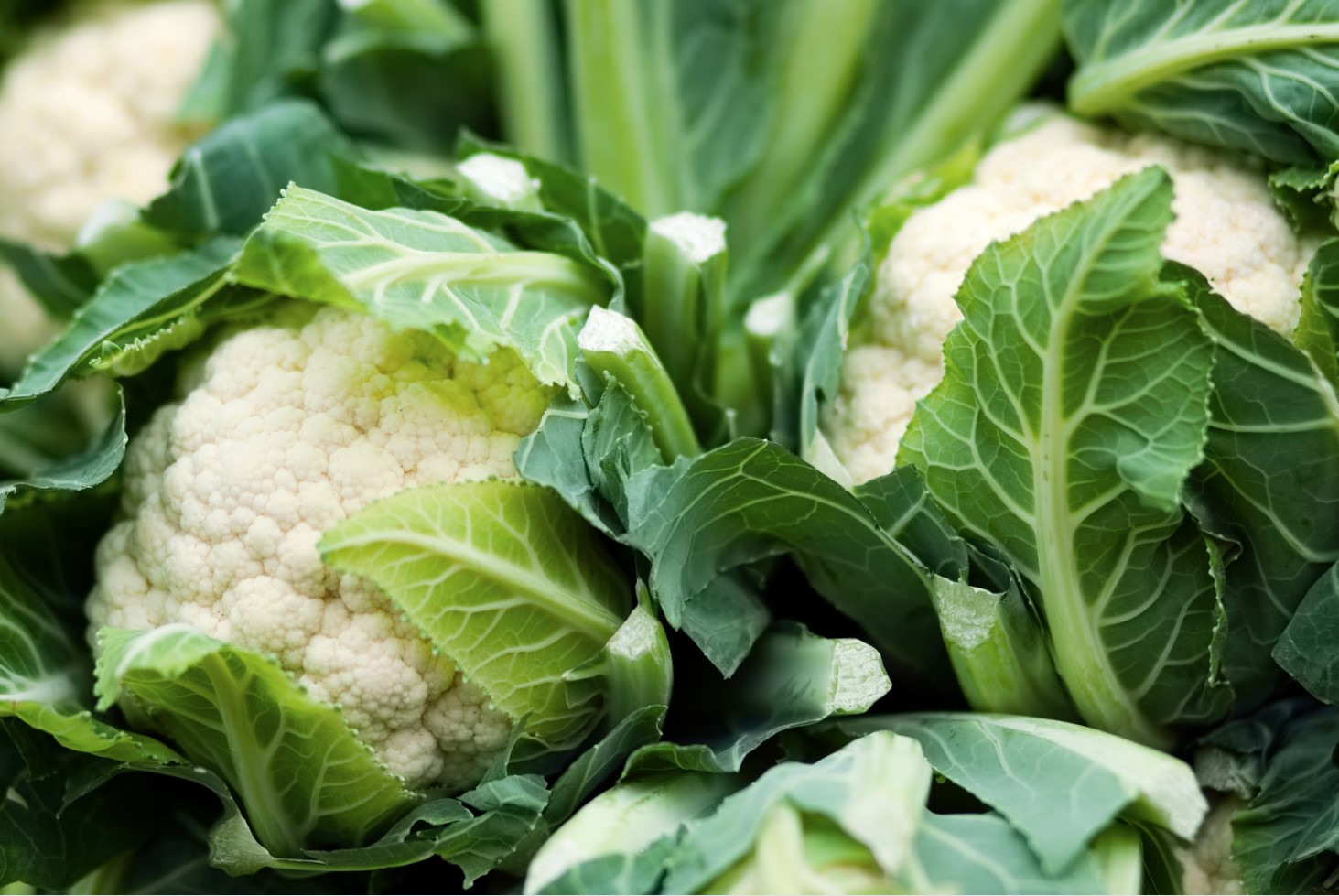
Creative Ways To Incorporate Cauliflower İn Your Diet
Are you looking for new and exciting ways to incorporate cauliflower into your diet? Look no further! This versatile vegetable is a great addition to any meal and can be prepared in a variety of delicious ways.
One creative way to enjoy cauliflower is by using it as a pizza crust. Simply pulse raw cauliflower florets in a food processor until they form a fine, rice-like texture. Then, mix the cauliflower with eggs, cheese, and seasoning to form a ball of dough. Roll the dough out into a crust shape and top with your favorite pizza toppings. Bake in the oven for a low-carb, veggie-packed pizza option that the whole family will love.
- Another way to use cauliflower is by making a creamy, dairy-free soup. Start by sautéing onions and garlic in a large pot. Add chopped cauliflower, vegetable broth, and a can of coconut milk to the pot. Simmer until the cauliflower is tender, then blend with an immersion blender or in a high-speed blender. Top with fresh herbs and enjoy!
- If you’re craving a hearty, comforting meal, try making cauliflower mac and cheese. Boil macaroni noodles and set aside. In a separate pan, sauté garlic and cauliflower until the cauliflower is tender. Blend the cauliflower with non-dairy milk, nutritional yeast, and seasoning to create a cheesy sauce. Top the cooked macaroni noodles with the sauce and bake in the oven until bubbly and golden.
Lastly, roasted cauliflower is always a crowd-pleaser. Cut the cauliflower into bite-sized pieces and toss with olive oil and your favorite seasonings (we love garlic powder, paprika, and cumin). Roast in the oven until the cauliflower is tender and golden brown.
| Benefits of Eating Cauliflower |
|---|
| High in vitamins and minerals like vitamin C, vitamin K, and folate |
| Low in calories but high in fiber, making it a great addition to any weight-loss diet |
| Contains powerful antioxidants that may help protect against chronic diseases |
| May improve digestion and support a healthy gut microbiome |
| May have cancer-fighting properties |
The possibilities with cauliflower are truly endless! Whether you’re looking for a low-carb pizza crust or a creamy, dairy-free soup, cauliflower is a healthy and delicious ingredient that can elevate any dish. So next time you’re at the grocery store, pick up a head of cauliflower and get creative in the kitchen!
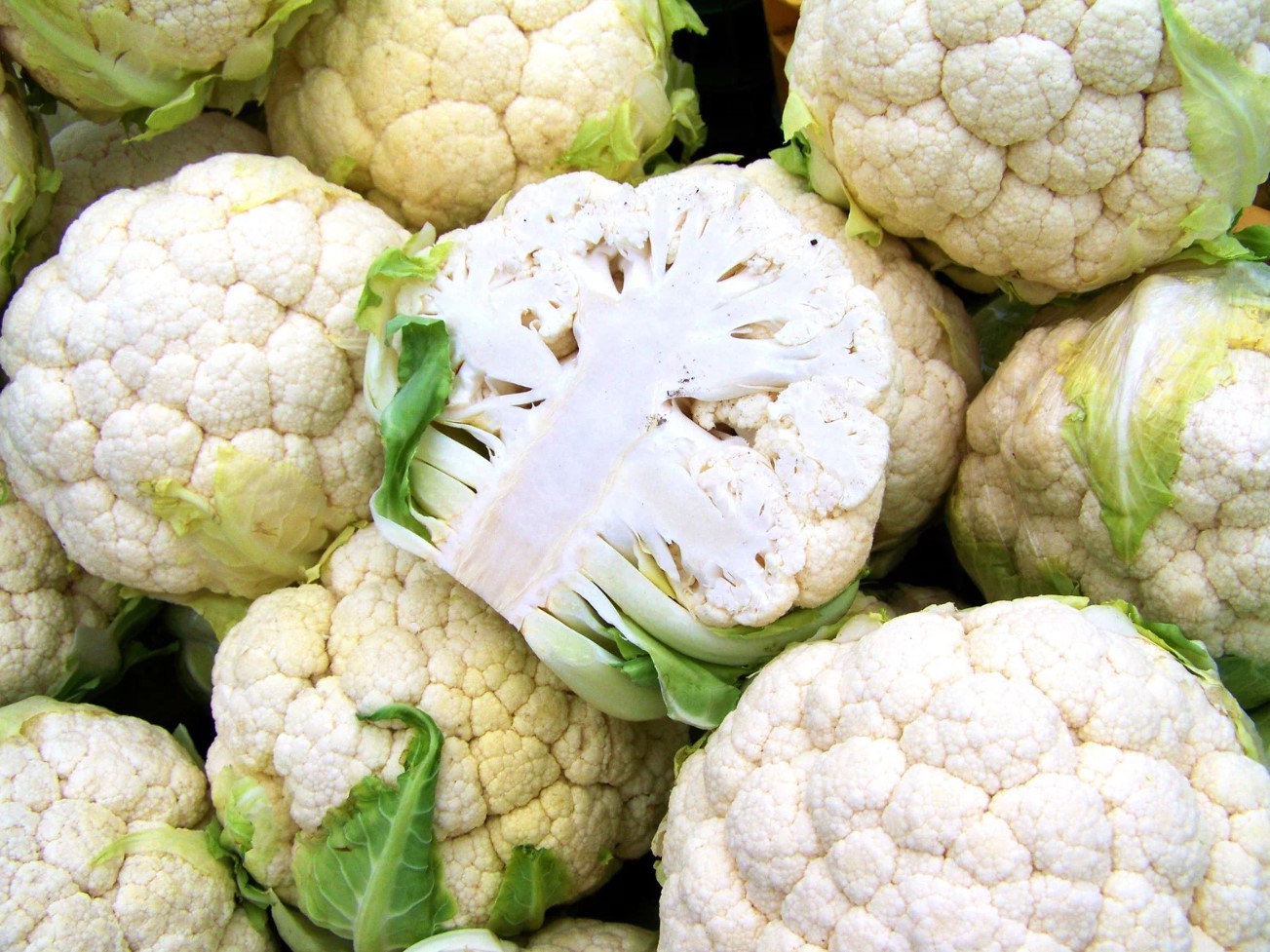
The History Of Cauliflower: Origins And Cultural Significance
Cauliflower has been around for centuries and has been valued for its nutritional benefits and versatility in cuisine. However, its origins are a mystery that has yet to be fully understood. Despite this, one can trace the history of cauliflower back to ancient times.
The first documented evidence of cauliflower cultivation dates back to the 6th century B.C. in Asia Minor. From there, the vegetable spread throughout the Mediterranean region and into Europe. Cauliflower was a favorite vegetable of the ancient Roman elite, as evidenced by the famous cookbook of Apicius, which contains several recipes involving the vegetable.
During the Arab conquest of Spain, cauliflower was introduced to the Iberian peninsula. It wasn’t until the 16th century, however, that cauliflower became widespread in Europe. The French court of Louis XIV is credited with popularizing this vegetable across the continent. Cauliflower was grown in the royal kitchen garden and became a favorite of the king and queen. From France, cauliflower spread to England in the early 18th century, where it quickly became a popular vegetable.
- Cauliflower was also used in medicine during the Middle Ages as a cure for a variety of ailments.
- In the 19th century, cauliflower was exported to America.
Today, cauliflower is grown in many parts of the world and is enjoyed in a variety of dishes. It has also become a popular substitute for traditional carbohydrates in dishes like pizza crusts and rice. Cauliflower is a versatile and nutritious vegetable with a rich history that continues to inspire new culinary innovations.
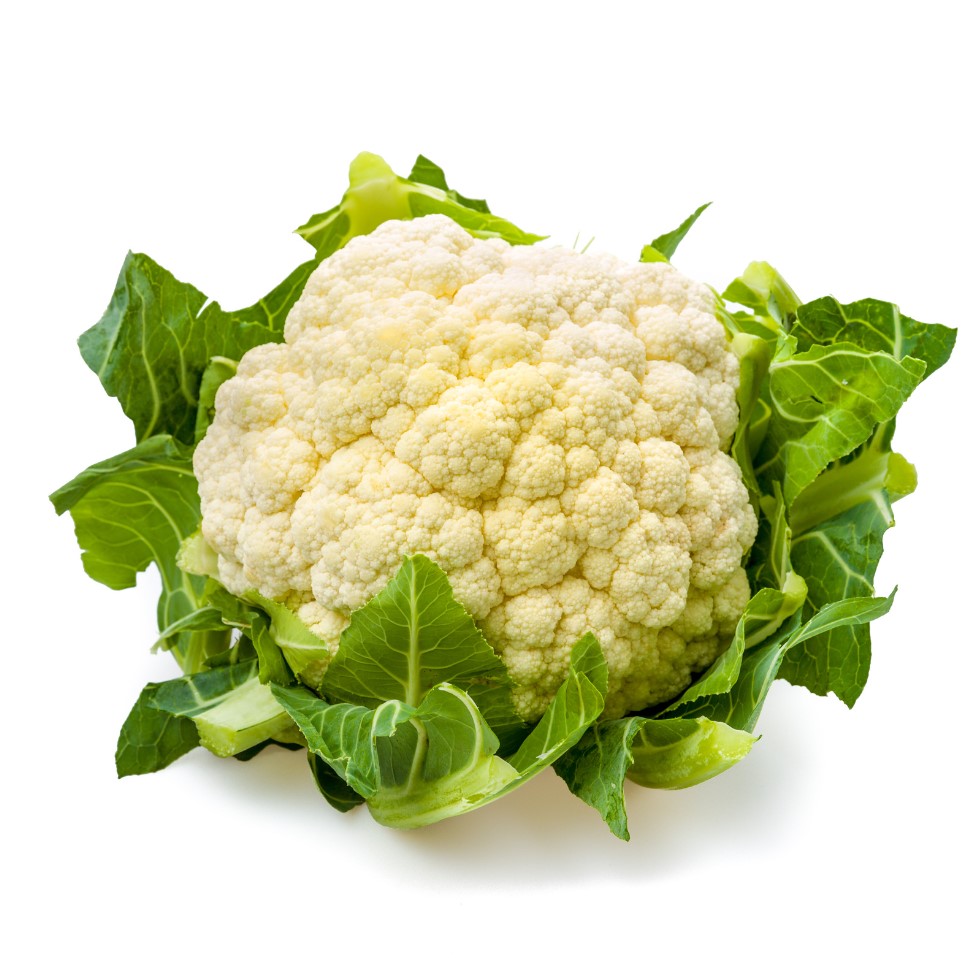
The Varieties Of Cauliflower: Types And Characteristics
Cauliflower, a member of the Brassica family, is a versatile and nutritious vegetable. Its popularity has increased in recent years as it has become a go-to ingredient for those following a low-carb, gluten-free, or plant-based diet. What many people do not know is that there are several varieties of cauliflower. Each of these varieties has unique physical characteristics and nutritional content.
Romanesco: This cauliflower variety is known for its pointy, conical shape, and bright green color. It has a crunchy texture and a slightly nutty taste. Romanesco is a good source of vitamin C, vitamin K, and folate.
- Purple Cauliflower: As the name suggests, this variety has a vibrant purple hue. It is high in antioxidants and anthocyanins, which give it its distinct color. It has a sweeter taste than traditional white cauliflower.
- Cheddar: This variety has a bright orange color due to its high beta-carotene content. It has a mild, nutty flavor and a crumbly texture. Cheddar cauliflower is a great source of vitamin A and vitamin C.
- Broccoflower: This hybrid cauliflower variety is a cross between cauliflower and broccoli. It has a light green color and a milder taste than traditional cauliflower. It is also rich in vitamin C and fiber.
Besides the four varieties mentioned above, there are many other cauliflower varieties such as Graffiti, Snowball, and Vitaverde. Each of these varieties has its unique taste, texture, and color. When selecting cauliflower, choose a firm head with no brown spots or discoloration. Store it in a plastic bag in the refrigerator for up to a week.
| Cauliflower Variety | Vitamin C | Vitamin K | Folate | Vitamin A |
|---|---|---|---|---|
| Romanesco | 85% | 5% | 9% | 0% |
| Purple | 77% | 13% | 14% | 0% |
| Cheddar | 92% | 0% | 13% | 56% |
| Broccoflower | 72% | 15% | 16% | 20% |
In conclusion, cauliflower is a nutritious and delicious vegetable that comes in many varieties. Each of these varieties has unique characteristics and nutritional content. Whether you prefer the classic white cauliflower or the vibrant purple variety, incorporating cauliflower into your diet is a smart choice for optimal health.
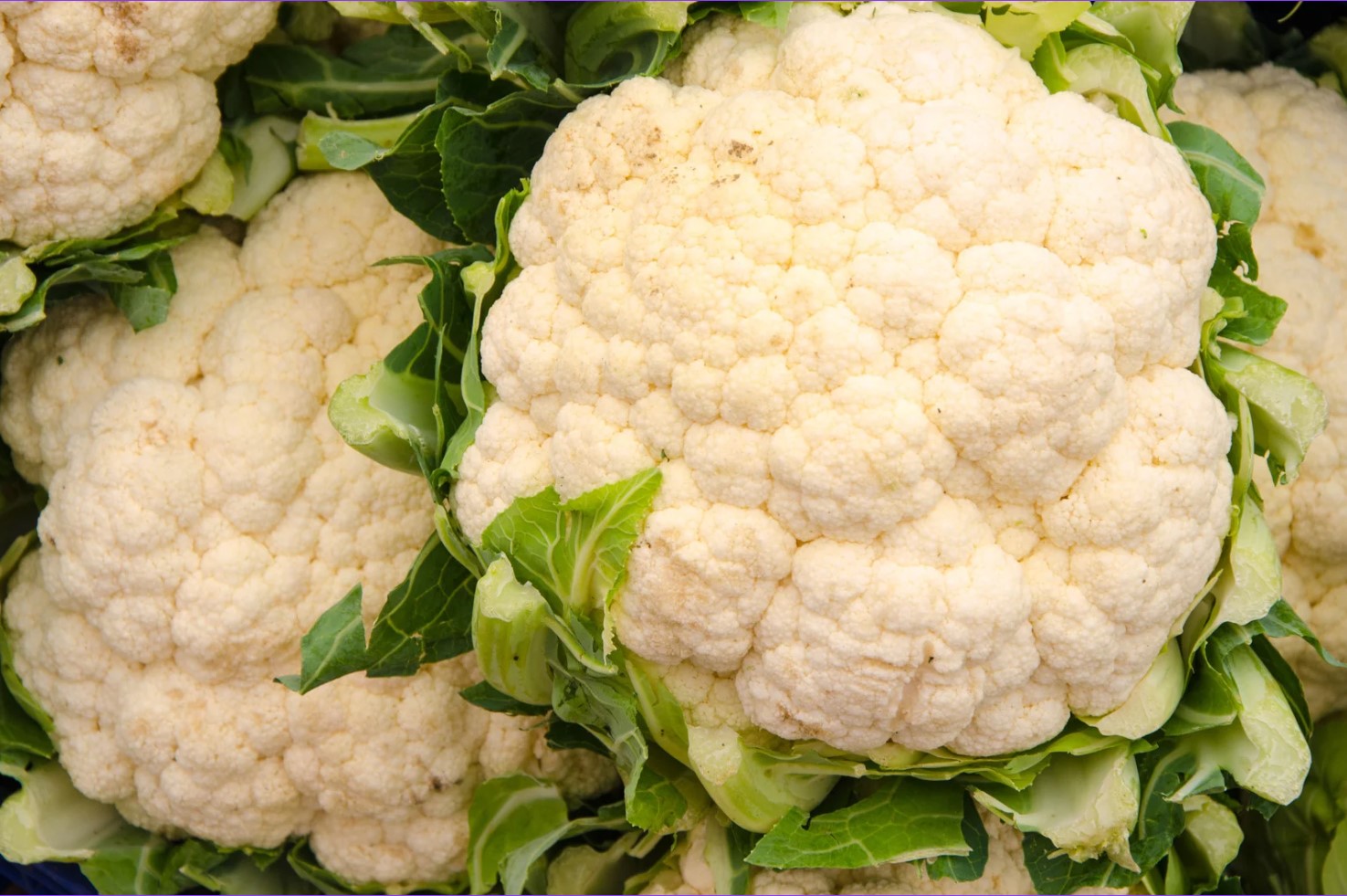
Cauliflower Vs Broccoli: Which İs Healthier?
Are you wondering which is healthier between cauliflower vs broccoli? These veggies are both part of the cruciferous family and are known for their high nutritional value. Let’s take a closer look at both and see which one comes out on top.
Cauliflower is a low-calorie vegetable that is high in fiber, vitamins, and minerals. One cup of cooked cauliflower contains only 28 calories, making it an excellent choice for weight management. It is also packed with vitamin C, vitamin K, and folate, all of which are essential for maintaining good health.
- One cup of cooked cauliflower contains:
- 2 grams of protein
- 5 grams of carbs
- 2 grams of fiber
- 77% of your daily vitamin C needs
- 20% of your daily vitamin K needs
- 14% of your daily folate needs
Broccoli is another cruciferous vegetable that is loaded with nutrients. One cup of cooked broccoli contains only 55 calories and is an excellent source of vitamin C, vitamin K, and vitamin A. It is also high in fiber and contains small amounts of other important nutrients like calcium and iron.
- One cup of cooked broccoli contains:
- 3 grams of protein
- 11 grams of carbs
- 5 grams of fiber
- 168% of your daily vitamin C needs
- 220% of your daily vitamin K needs
- 14% of your daily vitamin A needs
While both cauliflower and broccoli are incredibly healthy, there are a few differences between the two. Broccoli contains more vitamin C, vitamin K, and vitamin A than cauliflower. On the other hand, cauliflower is a better source of folate. Both vegetables are high in fiber and low in calories, making them ideal for weight management.
| Nutrient | Cauliflower (1 cup cooked) | Broccoli (1 cup cooked) |
|---|---|---|
| Calories | 28 | 55 |
| Protein | 2 grams | 3 grams |
| Carbohydrates | 5 grams | 11 grams |
| Fiber | 2 grams | 5 grams |
| Vitamin C | 77% of daily needs | 168% of daily needs |
| Vitamin K | 20% of daily needs | 220% of daily needs |
| Folate | 14% of daily needs | 10% of daily needs |
In conclusion, whether you choose cauliflower or broccoli, both are excellent choices for a healthy diet. It ultimately comes down to personal preference and taste. So why not try incorporating both into your meals for a nutritious boost?
The Role Of Cauliflower İn A Plant-Based Diet
Cauliflower is an incredibly versatile vegetable that can be used in a variety of dishes such as curries, soups, casseroles, and even as a pizza crust alternative. However, one of the most important roles that cauliflower plays is in a plant-based diet. A plant-based diet is one that is centered around consuming foods of plant origin like fruits, vegetables, legumes, and grains, while limiting or excluding animal products.
Why is cauliflower beneficial for a plant-based diet?
- Cauliflower is low in calories and high in nutrients like Vitamin C, K, and folate, making it an ideal choice for those looking to manage their weight while still getting essential vitamins and minerals.
- Cauliflower is rich in fiber, which helps to promote digestive health and regularity. Fiber also helps to keep you feeling full for longer, which can help with weight management.
- Cauliflower is a good source of antioxidants, which can help to reduce inflammation in the body and may even have cancer-fighting properties.
How can you incorporate cauliflower into your plant-based diet?
One of the easiest ways to incorporate cauliflower into your plant-based diet is by using it as a substitute for meat in dishes like stir-fries or tacos. Cauliflower can be roasted or sautéed to create a delicious, meaty texture that is satisfying and filling.
| Cauliflower Substitutes | Recipes to Try |
|---|---|
| Rice | Cauliflower fried rice |
| Mashed Potatoes | Cauliflower mashed potatoes |
| Pizza Crust | Cauliflower crust pizza |
You can also use cauliflower in soups, stews, and casseroles. By adding cauliflower to your dishes, you are not only increasing the nutritional value but also adding flavor and texture.
Conclusion
There are many reasons why cauliflower is a great addition to a plant-based diet. It is low in calories, high in nutrients, and rich in fiber and antioxidants. With so many recipes available, it’s easy to incorporate cauliflower into your meals and reap the benefits it has to offer.
Cauliflower For Weight Loss: Facts And Myths
Are you trying to lose weight and looking for healthy food options? Look no further than the humble cauliflower. This versatile and nutritious vegetable packs a powerful punch when it comes to weight loss. In this article, we will separate the facts from the myths surrounding cauliflower for weight loss.
Fact: Cauliflower is low in calories and high in fiber, making it an ideal food for weight loss. A cup of cooked cauliflower contains only around 30 calories, while providing 3 grams of fiber. Fiber helps keep you feeling full for longer, preventing overeating and snacking between meals.
Myth: Eating cauliflower alone will make you lose weight. While cauliflower is a healthy food choice, it’s important to maintain a balanced diet with a variety of nutrients. Cutting out entire food groups or relying solely on one food for weight loss is not sustainable or healthy in the long run.
- Fact: Cauliflower is a great substitute for high-calorie foods. It’s a versatile vegetable that can be used in many different recipes and prepared in many different ways. For example, cauliflower can be mashed as a substitute for potatoes or rice, roasted as a crunchy snack, or used as a pizza crust alternative.
- Myth: Only raw cauliflower is beneficial for weight loss. While raw cauliflower is a healthy snack option, cooking cauliflower can actually enhance its nutritional content. Cooking cauliflower can break down its tough cell walls, making it easier for your body to absorb its nutrients.
Fact: Incorporating cauliflower into your diet can lead to long-term weight loss. A diet full of nutrient-dense fruits and vegetables, like cauliflower, can help reduce the risk of chronic diseases and support weight loss. This type of diet is also sustainable, as it emphasizes a variety of foods that can be enjoyed on a daily basis.
In conclusion, cauliflower is a powerful tool for weight loss, but it’s important to keep in mind that it’s not a magic solution. Maintaining a healthy and balanced diet, getting regular exercise, and incorporating other healthy habits into your lifestyle are key for successful and sustainable weight loss. So, go ahead and enjoy this delicious and nutritious vegetable in all its forms!
Potential Risks And Side Effects Of Eating Cauliflower
While cauliflower is widely recognized as a healthy food option, it is important to acknowledge that there may be potential risks and side effects associated with consuming it. As with any food, moderation is key in order to avoid these potential negative effects.
One potential risk of eating cauliflower is its high sulfur content. While sulfur is an important nutrient, consuming too much of it can lead to digestive issues such as bloating and gas. However, cooking the cauliflower can help reduce the amount of sulfur and make it easier to digest.
Another potential side effect of consuming cauliflower is its goitrogenic properties. Goitrogens are compounds that can interfere with thyroid function and may lead to an enlarged thyroid gland, or goiter. However, for people with normal thyroid function, consuming moderate amounts of cruciferous vegetables like cauliflower is unlikely to cause any problems.
- To avoid potential risks and side effects of consuming cauliflower:
- Consume it in moderation.
- Cook it to reduce its sulfur content.
- Monitor your intake if you have thyroid issues.
It is also important to note that some people may be allergic to cauliflower or other cruciferous vegetables. Symptoms of an allergic reaction include itching, hives, and difficulty breathing. If you experience any of these symptoms after consuming cauliflower, it is important to seek medical attention immediately.
In conclusion, cauliflower is a nutritious and versatile vegetable that can be enjoyed in a variety of dishes. While there may be potential risks and side effects associated with consuming it, with proper moderation and preparation, these can be easily avoided. As always, it is important to consult with a healthcare professional if you have any concerns about adding cauliflower to your diet.
Cauliflower Recipes: From Soups To Salads, And More
Cauliflower is a versatile vegetable that can be used in many different dishes. From soups to salads and everything in between, there are countless ways to incorporate this nutritious veggie into your diet. Whether you’re a fan of classic cauliflower recipes or are looking to try something new, there’s no shortage of options to choose from.
If you’re looking for a simple and healthy way to enjoy cauliflower, try roasting it in the oven. Simply toss the cauliflower florets with olive oil, salt, and pepper, and roast them in a 400-degree oven for about 20-25 minutes. The result is a crunchy and flavorful side dish that pairs well with just about anything.
- Roasted cauliflower soup is a comforting and delicious option for cooler weather. Simply roast the cauliflower as described above, then blend it with chicken or vegetable broth, garlic, onion, and spices for a creamy and satisfying soup.
- Cauliflower rice is a popular low-carb alternative to traditional rice. Simply pulse the cauliflower florets in a food processor until they reach a rice-like consistency, then sauté them in a pan with garlic, onion, and your choice of seasonings.
If you’re looking for a more substantial cauliflower dish, try making cauliflower steaks. Simply slice the cauliflower into thick slices, then season with your favorite spices and roast in the oven or grill on the stovetop for a satisfying vegetarian meal.
| Recipe | Ingredients | Instructions |
|---|---|---|
| Creamy Cauliflower Soup | Cauliflower, chicken or vegetable broth, garlic, onion, heavy cream, salt, pepper | Roast cauliflower, then simmer with remaining ingredients until tender. Blend until smooth and serve. |
| Cauliflower Rice Pilaf | Cauliflower, garlic, onion, almonds, dried cranberries, chicken or vegetable broth, salt, pepper | Pulse cauliflower in food processor, then sauté with remaining ingredients until tender. Serve as a side dish or light lunch. |
| Cauliflower Steaks | Cauliflower, olive oil, garlic, lemon juice, salt, pepper | Slice cauliflower into thick slices and season. Roast or grill until tender and serve with your favorite sides. |
Whether you’re a cauliflower lover or are simply looking for new ways to incorporate this versatile veggie into your diet, there are countless delicious and nutritious options to choose from. So why not give cauliflower a try in your next meal?
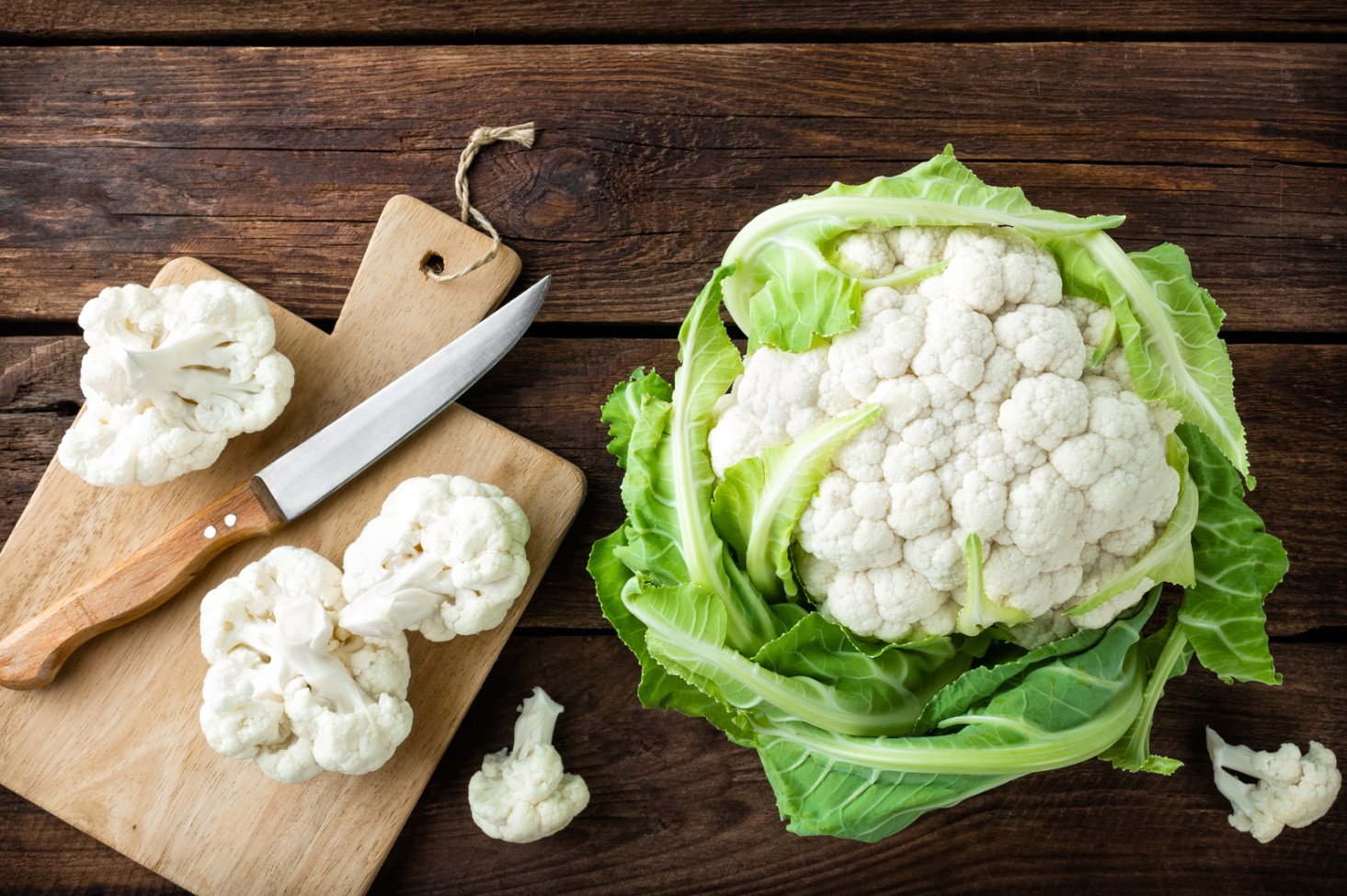
How To Grow Cauliflower: Tips For A Successful Harvest
If you are someone who loves gardening and wants to add some healthy vegetables to your backyard, growing cauliflower is a great option. Not only is it a delicious addition to your meals, but it also has several health benefits that make it worth considering. However, to ensure a harvest that is both fruitful and healthy, there are some tips you need to keep in mind. Here are some useful tips for growing cauliflower:
- Planting: Cauliflower grows best in cool weather, so it is best to plant it in the early spring or late summer. Make sure the soil is well-draining, fertile, and moist before planting. You can start the process by sowing seeds directly into your garden or by transplanting seedlings.
- Watering: Cauliflower needs consistent moisture to develop properly. Watering it regularly is crucial, especially during dry spells. It is important not to let the soil dry out, but also not to overwater it, as this can lead to rotting.
- Feeding: Cauliflower plants need nitrogen-rich fertilizers to grow well. Make sure to use a slow-release fertilizer at the time of planting and add a side-dressing of nitrogen-rich fertilizer 3-4 weeks after planting. This will ensure that your plants have all the nutrients they need to grow healthy and strong.
By following these tips, you can successfully grow cauliflower in your garden. However, keep in mind that it requires consistent care and attention. The plant can be affected by several pests and diseases, so make sure to keep an eye on your plants regularly and take appropriate measures to control any issues.
| Type of Soil | Ideal pH Level |
|---|---|
| Well-drained loamy soil | 6.0-7.0 |
| Clay soil | For early-season crops: 6.0-6.5 |
| For late-season crops: 6.5-7.5 |
Keep these tips and tricks in mind and soon you’ll have a bountiful harvest of fresh and nutritious cauliflower right in your backyard.
The Global Cauliflower Market: Statistics And Trends
Cauliflower is a versatile vegetable that can be used in a variety of different dishes. It is part of the cruciferous vegetable family and is low in calories, while also being high in fiber, vitamins and minerals. These characteristics make cauliflower a popular choice for those looking to maintain a healthy lifestyle. One of the most interesting aspects of this vegetable is the global cauliflower market. This market has seen significant growth in the last few years, with more and more people recognizing the benefits of including cauliflower in their diets.
According to recent statistics, the global cauliflower market is expected to continue growing in the coming years. In 2018, the market was valued at $3.9 billion USD and is projected to reach $9.8 billion USD by 2025. This growth is due in part to the increasing popularity of plant-based diets, as well as the rising awareness of the health benefits of consuming cruciferous vegetables like cauliflower.
Another interesting trend in the global cauliflower market is the increasing demand for organic and non-GMO cauliflower. Consumers are becoming more conscious about the environmental impact of agriculture and are looking for ways to reduce their carbon footprint. This has led to a rise in the production of organic cauliflower, which is grown without synthetic pesticides and fertilizers.
- Some other key trends in the global cauliflower market include:
- – Increased use of cauliflower as a substitute for grains and processed foods
- – Growing demand for frozen and pre-cut cauliflower products
- – Rising popularity of specialty and heirloom varieties of cauliflower
All of these trends point to a bright future for the cauliflower market. As more people become aware of the nutritional benefits of this versatile vegetable, demand is likely to continue to grow. In addition, advances in farming techniques and technology are making it easier and more cost-effective to produce and distribute cauliflower on a global scale.
| Top Cauliflower Producing Countries | Production (in metric tons) |
|---|---|
| China | 9,010,410 |
| India | 8,455,800 |
| Spain | 983,200 |
| Mexico | 779,443 |
| Italy | 759,095 |
China and India are the top two producers of cauliflower in the world, with a combined production of over 17 million metric tons. Spain, Mexico and Italy round out the top five producing countries. With such a high level of production, it’s no wonder that cauliflower is becoming more and more popular around the globe.
In conclusion, the global cauliflower market is an important and growing aspect of the agriculture industry. With rising demand for organic and non-GMO products, as well as the increasing popularity of plant-based diets, the future looks bright for this versatile vegetable. Whether you prefer your cauliflower roasted, mashed, or used as a substitute for rice or potatoes, there’s no denying that this cruciferous vegetable is here to stay.
The Future Of Cauliflower: Innovations And Advancements
Cauliflower cultivation has been an integral part of agriculture for centuries. However, advances in technology and scientific research have paved the way for new innovations and exciting developments in cauliflower production. As we look towards the future, it is clear that cauliflower is poised to play an even more significant role in our diets and the economy at large. In this article, we will explore some of the latest innovations and advancements in the world of cauliflower.
Introducing Caulilini: Caulilini is a newer cauliflower variety that has become increasingly popular in recent years. Developed by the company Mann’s, this variety produces edible stems, making it an excellent choice for salads and other dishes. Caulilini is also known for its tender texture and sweet taste, making it a versatile and tasty addition to any meal.
- Vertical Farming: Vertical farming is a relatively new technology that involves growing plants in stacked layers in a controlled environment. This technique can significantly increase the yield of cauliflower crops while decreasing the land area needed for cultivation. Vertical farming also allows for year-round production, making it an attractive option for farmers looking to maximize their profits.
- Nutritional Improvements: Scientists are continually researching ways to improve the nutritional value of cauliflower. One recent breakthrough involves the development of a variety that is richer in carotenoids than traditional cauliflower. Carotenoids are essential nutrients that may have cancer-fighting properties and can benefit eye health.
Cauliflower Rice: Cauliflower rice has become a popular substitute for traditional rice due to its low-carb and gluten-free composition. In recent years, innovations in the production of cauliflower rice have made it easier for consumers to enjoy this healthy alternative. Today, you can find pre-packaged cauliflower rice in many grocery stores, making it a convenient option for busy households.
| Advancements | Benefits |
|---|---|
| Improved pest management techniques | Reduction in the use of harmful pesticides |
| Automated packing and processing systems | Increased efficiency and reduced costs for farmers |
| Drought-resistant varieties | Improved crop yields in arid regions or during periods of drought |
The future of cauliflower looks bright, with new innovations and advancements continually being developed. These exciting changes will not only benefit farmers but also consumers, as we continue to discover new ways to incorporate this nutrient-rich vegetable into our diets.